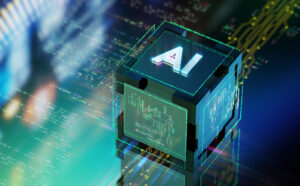
Porsche says AI use speeds up vehicle development and calibrations
By onMarket Trends | Technology
Porsche Engineering says it has found a way to reduce the need for bench tests and test drives after calibrations through the use of AI.
However, Porsche says fine tuning and validation of raw calibration data are carried out through bench tests and test drives, which “must remain an integral part of the calibration in the future due to the requirements for quality control and assurance.”
Porsche Engineering Reinforcement Learning (PERL), the virtual calibration software from Porsche Engineering, shifts the majority of ECU data entry to AI to be able to cope with the higher complexity in the future while also increasing development efficiency and saving money, according to a news release from the OEM.
“When applying new vehicle functions, the engineers have to put in an ever-greater amount of work, because, with the increasing range of functions and the growing system connectivity of modern vehicles, the number of tests and the number of relevant parameters required for the calibration also increases significantly,” Porsche said.
AI is used to calibrate the control units and input data.
“We are turning the calibration of driving functions into a smart decision-making process,” said Matteo Skull, Porsche Engineering lead engineer, in the release.
PERL is based on deep reinforcement learning, which Porsche says is a self-learning AI process that leads to the best possible calibration result for an entire function resulting in process efficiency of the methodology and universal applicability to many areas of vehicle development.
“Porsche Engineering recognized at an early stage the potential of deep reinforcement learning for the automated calibration of control units,” said Matthias Bach, Porsche Engineering HV battery calibration and diagnostics senior manager.
Engineers have worked on PERL with AI experts at Porsche Engineering sites in Romania since 2017, he added. More than 50 patents have been registered for PERL since then.
PERL has been used for calibration in two customer projects — coordination of the fuel mixture formation for a new gasoline engine in hybrid vehicles and the calibration of vibration damping in the powertrain of a Porsche electric vehicle.
“Customized parameterization of complex and varied control systems in the automotive industry continues to be a major challenge,” said Sören Hohmann, Karlsruhe Institute of Technology (KIT) Institute of Control Systems head and FZI Research Center for Information Technology director. “Modern learning methods can significantly accelerate the extensive, cost-intensive, and sometimes manual calibration and make it more efficient.”
PERL will also will serve as a development tool in meeting stricter emission standards, according to the release.
While PERL’s effect on efficiency isn’t yet quantifiable, Porsche says “it is already clear that AI-supported calibration methods such as PERL can significantly accelerate the overall development process” by getting valid results sooner.
After extensive training, it took only a few seconds in target deployment for vehicle-specific calibration adaptation in vibration damping of EV powertrain, which can be transferred from the original vehicle to others, including ones with different powertrains without modification and, in some cases, without the need for vehicle-specific measurements, Porsche said.
“In total, we can save one to two weeks of calibration time,” said Tobias Roulet, Porsche Engineering E-Vehicle Calibration manager. “PERL enters valid data in advance so there is no risk of damage due to incorrect calibration data when the powertrain is first commissioned.”
Now that both customer projects are complete and proven successful, an expansion of PERL use by Porsche is in the planning stage. The OEM plans to use the program, for example, to optimize camshaft bearing control calibration, according to the release.
Images
Featured image credit: da-kuk/iStock
More information
CIC committee looks at AI use possibilities for collision repair shops
